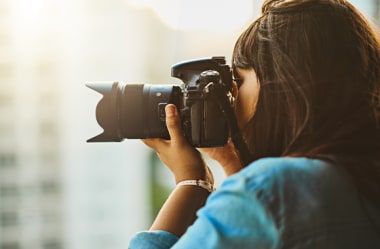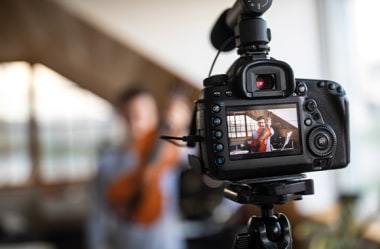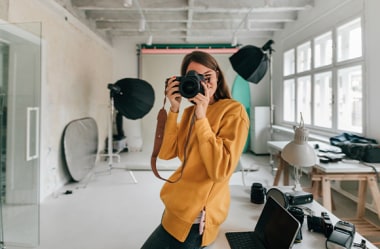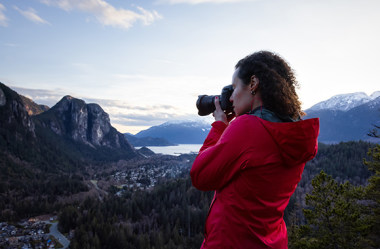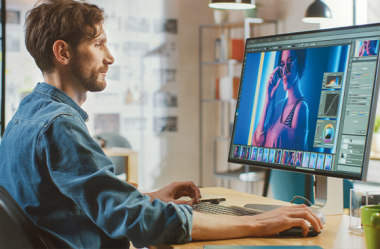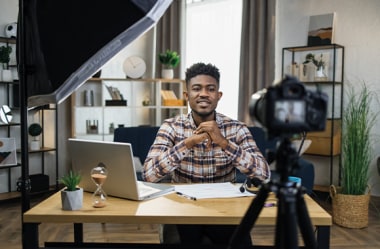Photography for Beginners: Photography Tips and Ideas on How to Take Better Photos
If you are looking to add a bit of creativity to everyday life and to see the world from a different point of view, then photography could be the ideal hobby for you. You will enjoy being at one with nature, learning more about working with others, finding the right subject as well as going on photo tours. Photography also automatically trains your perception and helps you to adopt new perspectives in everyday life. In this article we will show you how you can train your photographic eye to be able to take better photos and which photo ideas will help improve your photography skills.
The photographic eye: train your perception with these photography tips
For many amateur photographers taking photos means quickly taking a photo with your mobile phone to help keep it in your memory. Whereas a hobby photographer who invests a lot of time and dedication into taking photos will usually take the time to turn their photos in a masterpiece. Photos should not only look great, but they should also show your personal point of view.
Those who are new to photography need to first understand how our view of something and the image on the camera can differ in order to be able to take better photos. In everyday life, the human eye can simply block out many details. We often only see what we focus on. A camera, on the other hand takes a picture with all the details and photographs everything that is there. As a result, your photos may not have a clear motif at the beginning, but they may contain distracting elements or you may simply miss some interesting motifs.
It is a good idea to train the photographic eye specifically to be able to view the world as it is with all its details. A fundamental difference between a snapshot and a well-considered photo is that a photographer already thinks about how the photo will look afterwards before they have even taken it. They are aware of the distracting elements, which will help them to consciously choose the detail and follow the rules of image composition. We have compiled various photography tips and photo ideas below, which will help you to train your photographic eye so that you can visualise your photos beforehand and thus take better photos.
It is quite normal to make mistakes at the beginning. Making mistakes are part of the learning process. So always make sure to take a step back and look at your photos and think about what improvements you could make next time.
It is quite normal to make mistakes at the beginning. Making mistakes are part of the learning process. So always make sure to take a step back and look at your photos and think about what improvements you could make next time.
Photography tips: setting the scene with a main motif
Make sure to visualise your photo before taking it as this can help to improve your photography skills:
- What is my main subject? A photo has a clear message if it doesn’t have too many details. A photo with too many details and no clear motif makes it difficult for the viewer to find the picture's message.
- What would I like my picture to say? Think in advance about the story, details or feelings you would like your picture to portray.
- Are there any distracting elements in the picture? If there are areas in the photo that are not relevant, you can choose a different frame or a different perspective. You can also work with the aperture to blur the background and focus on your subject.
These three photography tips can help you to improve your visual skills in order to take great pictures with a clear message.
For photography beginners it could be helpful to attend a photography course in your local area. Professionals in your local area can not only teach you the theoretical basics of photography, but they can also give you individual support and helpful tips.
For photography beginners it could be helpful to attend a photography course in your local area. Professionals in your local area can not only teach you the theoretical basics of photography, but they can also give you individual support and helpful tips.
Taking better photos: here is how to improve your photographic eye
Not only the subject, but also other factors such as the lighting conditions or the perspective can have an effect on your photo. To take better photos, you can therefore train your perception with the following photography tips below:
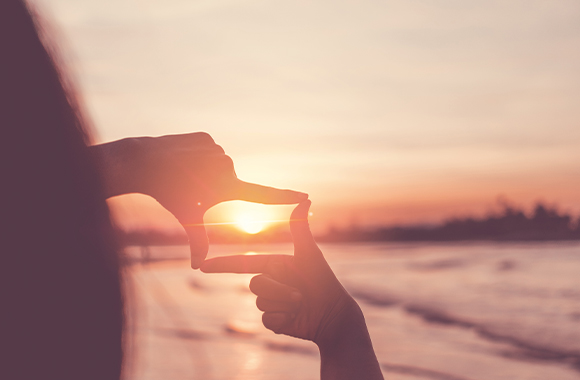
- Consciously perceive light: the lighting conditions not only have an effect on the camera settings, but it also changes the effect of the picture. Therefore, it is a good idea to try out different light conditions. Observing the soft light in the morning and in the evening, but also being aware of the difference at midday as the light shows hard shadows , which will help you to learn how light and shadows can interact with one another.
- Get to know your subject: It is a good idea, if possible, to look at a motif from all sides and from all perspectives. Take time to discover the smaller details and discover which angles are particularly effective. As a beginner if you are using a fixed focal length, you will automatically have a closer shot of your subject, which is why it is always a good idea to get to know your subject beforehand.
- Use different settings and perspectives: take a lot of different shots of the same subject. Try out the different settings to achieve different perspectives, formats, exposure times and aperture. Not only will it help you to learn more about the different camera settings, but you will also develop an eye for how a subject can appear in a picture.
- Learn the basics of composition: there are a few basic rules (e.g. the rule of thirds) that make a photo look particularly harmonious. By following these photography rules, you will be able to take better pictures.
Look closely at other people's photos and films and consciously pay attention to how the artists have constructed the image. By doing so you can learn from others and incorporate certain elements into your photos.
Look closely at other people's photos and films and consciously pay attention to how the artists have constructed the image. By doing so you can learn from others and incorporate certain elements into your photos.
Photography for beginners: 10 photo ideas to help improve your photographic eye
In addition to these photography tips that you can use to help improve your photography skills, there are also a couple of practice exercises that you can try. They will help you to perceive your surroundings differently, to pay attention to different details and to concentrate on the most important elements, which as a result will help you to take better photos:
- Photo idea 1: Photograph through a frame - take a photo frame or make one and use it to frame your subject.
- Photo idea 2: Photograph a specific colour - choose a colour and take photos of only the subjects in that colour.
- Photo idea 3: Look for specific shapes and take photos of them - choose a shape (e.g. triangle, circle, etc.) and try to find it in your surroundings.
- Photo idea 4: Find reflections - look for reflections in your surroundings and use them consciously in your photos.
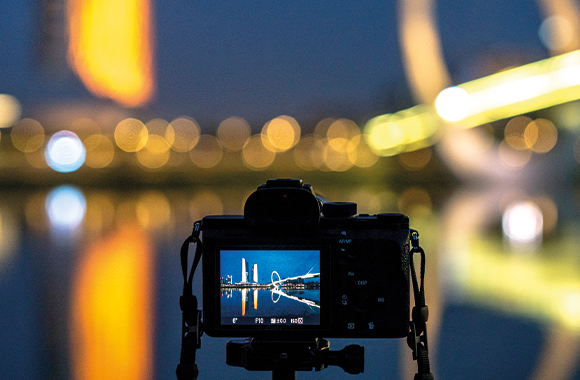
- Photo idea 5: Create a foreground - a foreground will make your photo look even more interesting. Try and see how you can incorporate a foreground into your image.
- Photo idea 6: Look for symmetries - symmetries make a photo look particularly harmonious. Find symmetries and incorporate them into your photos.
- Photo idea 7: experiment with light and shadow - find special shadow plays and explore how you can use light and shadow in a targeted way.
- Photo idea 8: Find leading lines - lines in the image automatically lead the viewer to your subject. Take advantage of this effect and include lines in your photo.
- Photo idea 9: Use strong contrasts - look for strong contrasts and use them consciously. These can be colour contrasts or different structures or sizes.
- Photo idea 10: Combine previous photo ideas – try and combine several of the previous photo ideas.
These practice exercises can help you to train your perception and help you to visualise new pictures. In addition to a skilled photographic eye, photography beginners also need the right camera accessories and the knowledge on how to use the different camera settings. To help you get started with your new hobby you will find further helpful articles on the topic of "Photography for beginners" below.
All articles
Photography tips for beginners: tips on getting your first camera
If you would like to give photography a go to find out whether it could be your new favourite hobby, then why not give it a go with the camera on your smartphone. Switching from a smartphone to a more professional camera will offer you more creative options. There are a wide range of different camera models, lenses and camera accessories available to choose from. Here you can read more about what type settings you first camera should have and which type of lens is best suited to beginners. We also give some practical tips on what camera accessories could be helpful for beginners.
Camera settings and learning how to take photos
Aperture, exposure time, ISO value and a single lens reflex camera can initially cause a couple of technical difficulties for beginners until they have gained some photography experience by taking some photos. Photography beginners will need to understand how to expose a photo correctly, so that they know how the various camera settings work and when to use them. In the following article we will explain how the various camera settings work and we will also give you some basic tips on image composition that will help you to take some fantastic photos.
Different types of photography: portrait, fashion & architecture photography for beginners
Photography is a diverse hobby which allows you to get really creative. Photography has something to suit every taste such as taking photos of people or maybe exploring the countryside and taking photos of inanimate subjects whilst being at one with nature. In the following article, we'll give you an insight into portrait and fashion photography, where you would work closely with others to get the perfect shot. We will also give you an insight into architectural photography, which is a great choice if you enjoy travelling.
Photography tips: landscape & wildlife photography for beginners
Whilst taking photos you can relax and enjoy everything nature has to offer. Landscape and wildlife photography in particular allow you to relax and de-stress. In the following article you can find out more about what makes these types of photography so special. We also give you some tips on the best camera settings and what camera accessories you will need so that you can get started.
Photo editing for beginners: step-by-step guide on how to edit photos
Editing your photos will allow you to add a real wow factor to them. It's not all about fundamentally changing your photo as it is more about optimising the effect of the image with a few basic changes. We will show you which photo editing options are relevant for beginners and what effects they will have on your photos.
Videography for beginners
Hobby filmmakers can make their own films, short video clips or sketches with their smartphone or camera. You should make sure to allow adequate time to plan and organise your videos and if you are planning on taking a longer video, then you should allow extra time for planning so that everything runs smoothly. In the following article we will give you some helpful tips on how to prepare yourself before shooting a film, beginner-friendly camera settings and video editing.
References
https://www.format.com/magazine/
(last accessed on 03.11.2022)
https://www.learnaboutfilm.com/
(last accessed on 03.11.2022)
https://petapixel.com/photography-composition-techniques/
(last accessed on 03.11.2022)
https://photographylife.com/
(last accessed on 03.11.2022)
https://www.thewanderinglens.com/
(last accessed on 03.11.2022)
Image sources
iStock.com/MarioGuti
iStock.com/Suwaree Tangbovornpichet
iStock.com/yipengge
iStock.com/PeopleImages
iStock.com/miodrag ignjatovic
iStock.com/AleksandarNakic
iStock.com/edb3_16
iStock.com/gorodenkoff
iStock.com/undefined undefined

